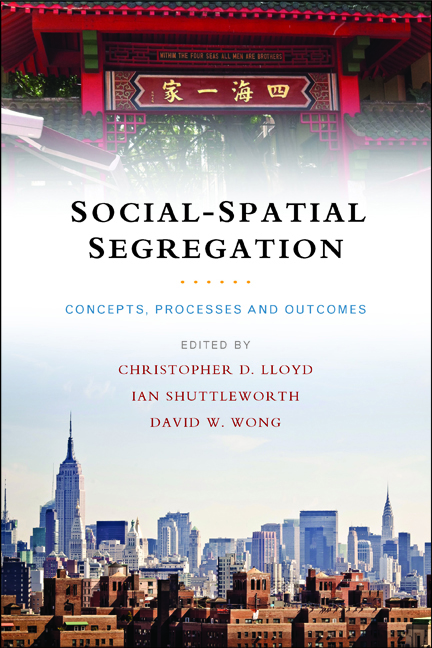sixteen - Exploring socioeconomic characteristics of ethnically divided neighbourhoods
Published online by Cambridge University Press: 04 March 2022
Summary
Introduction
Large US cities are generally ethnically diverse and may have high levels of ethnic residential segregation (see Chapter Six, this volume, for context). What are the socioeconomic impacts for those living in these ethnically segregated neighbourhoods? Do separate living spaces equate to equal living spaces for all ethnic groups in a city? The goal of this chapter is to investigate the consequences of living in segregated neighbourhoods in Milwaukee, Wisconsin, the second most segregated American city in 2000 (Glaeser et al, 2001, 8). The research will identify where ethnic groups live and analyse the social effects of these spatial distributions. In terms of social impacts, various socioeconomic variables (for example, income levels and public school reading scores) are analysed and compared to the ethnic residential patterns. Socioeconomic variables are statistically summarised for the most segregated African American, Hispanic and White neighbourhoods. The results of the chapter may help to determine if there is a connection between social inequality and spatial inequality in an American urban landscape.
Impacts of ethnic residential segregation
As Peach (1996) noted, there is ‘good’ and ‘bad’ segregation, where people may live in segregated areas that have formed for either positive or negative reasons. Ethnic residential segregation can be seen as ‘a process that victimizes some groups while liberating others’ (Kaplan and Woodhouse, 2004, p 583). Ethnic group members may feel ‘liberated’ by living and working in an ethnic neighbourhood where they do not face constant discrimination. Historically, many immigrants who came to America clustered into ethnic enclaves. This ‘good’ segregation of ethnic enclaves provided new arrivals, with ‘social support and a semblance of the old world now lost to them’ (Mayadas and Segal, 2000, p 208). The ethnically segregated generate social contacts, preserve ethnic culture, offer support to group members and create ethnic businesses (van Kempen and Özüekren, 1998). Ethnically segregated neighbourhoods may have provided economic opportunities in the development and growth of ethnic businesses. For example, if ordinary restaurants do not provide certain ethnic dishes, then there would be the possibility of the establishment of an ethnic restaurant to satisfy an unmet demand.
- Type
- Chapter
- Information
- Social-Spatial SegregationConcepts, Processes and Outcomes, pp. 389 - 412Publisher: Bristol University PressPrint publication year: 2014



